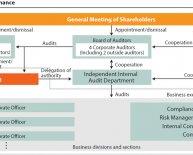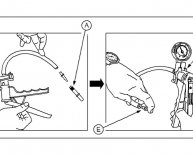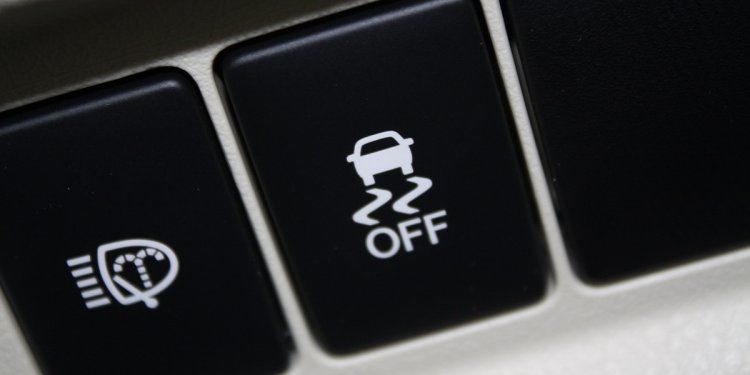
What is Traction control system in car?
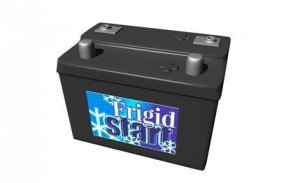 Your Battery
Your Battery
We’ve consulted multiple electrical engineers, and most say the same thing: If you have a weak, failing battery, it will not get better if you ignore it. The battery is one of our favorite parts of a car, and one that we really don’t mind spending money on, because the alternative to having a good battery—your car doesn’t start, and you and your loved ones freeze to death—is unappealing. If you have a fresh battery and it’s still running down, get your charging and electrical systems checked for problems. This is not something to put off. There are few worse sounds than the death of a battery as you try to crank the engine. Idling with your front and rear defrosters on high, your lights on, Bubba the Love Sponge cranked to full volume, and a coffee warmer plugged into the cigarette lighter is asking a lot of an alternator. A good battery can help manage the electrical load.
Proper Warm-Up
Plenty of people claim that letting the engine warm up any longer than it takes for the oil-pressure gauge to register is wasting gas. But a fully warmed engine is a more efficient engine. Besides, taking off in a car that hasn’t warmed properly, hasn’t had the windows cleared of ice or snow, and is still freezing cold inside is dangerous at worst, no fun at best. You think Al Gore hops into his Toyota Prius without warming it up?
Winter Tires
Readers from less snowy areas might think of winter tires as those big knobby-lugged “mud and snow” tires on the rear wheels of two-wheel-drive Ford F-150s used for possum chasing on dirt roads. But if you move up north to, say, Detroit, you promptly learn that snow tires, by golly, are amazing. Bolt up a set of Bridgestone Blizzaks or Michelin X-Ices, and suddenly your car can actually go and possibly even stop in slippery conditions.
Just be sure to take them off when the weather warms up—45 degrees is a good rule of thumb—because the soft rubber compounds used in winter tires wear out more quickly on dry pavement. Even if you don’t have winter rubber, at least remember that tread, and quite a bit of it, is a good thing. And if you drop the air pressure to 5 psi to get out of a snow bank, remember to fill the tires back up, okay?
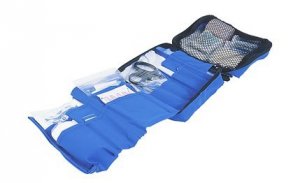 The ideal cold-weather crisis kit consists of a thermal blanket, ten bucks in cash and two in change, a charged-up flashlight with batteries (or one of those crank-’em-up flashlights with the LED bulbs), an extra ice scraper, a five-pound bag of cheap clay cat litter (to throw under your tires when you get stuck), a small shovel, a charged-up battery booster with an extra cell-phone car-charger cable, one of those little sets of jumper cables that come in a pouch, a couple of pairs of warm gloves, a warm hat, an extra flannel sweatshirt with a hood, some paper towels, a can of aerosol spare-tire filler, a few packs of chemical hand warmers like HotHands, and a half-open box of fabric-softener sheets. Why dryer sheets? Mostly because they smell good, but when people see your kit and ask why you have dryer sheets, you can look sly and say, “Wouldn’t you like to know?” /p p That’s a lot of crap to cram into your trunk, but there’s a good chance you need an excuse to clean it out anyhow. /p p strongFour- or All-Wheel Drive/strong /p p When ice or snow first falls, it seems the majority of weather-related crashes are in four- and all-wheel-drive vehicles, because having all four wheels powered makes drivers think they are Mikko Hirvonen or Jari-Matti Latvala, when really they lack the skill to even pronounce those WRC drivers’ names. The logic is, they say, “My a href="/ford/explorer" target="_self"Ford Explorer/a will accelerate to 60 mph on the ice and snow; ergo, it has got to be okay to idrive /i60 mph on the ice and snow.” Fine, unless at some point you plan to turn or perhaps slow down. You must know the limitations of four- and all-wheel drive. Check out YouTube, and you’ll see that going too fast on ice, even if you’re Mikko Hirvonen or Jari-Matti Latvala, you’ll crash. /p table border="0" cellpadding="2" cellspacing="0"x">
The ideal cold-weather crisis kit consists of a thermal blanket, ten bucks in cash and two in change, a charged-up flashlight with batteries (or one of those crank-’em-up flashlights with the LED bulbs), an extra ice scraper, a five-pound bag of cheap clay cat litter (to throw under your tires when you get stuck), a small shovel, a charged-up battery booster with an extra cell-phone car-charger cable, one of those little sets of jumper cables that come in a pouch, a couple of pairs of warm gloves, a warm hat, an extra flannel sweatshirt with a hood, some paper towels, a can of aerosol spare-tire filler, a few packs of chemical hand warmers like HotHands, and a half-open box of fabric-softener sheets. Why dryer sheets? Mostly because they smell good, but when people see your kit and ask why you have dryer sheets, you can look sly and say, “Wouldn’t you like to know?” /p p That’s a lot of crap to cram into your trunk, but there’s a good chance you need an excuse to clean it out anyhow. /p p strongFour- or All-Wheel Drive/strong /p p When ice or snow first falls, it seems the majority of weather-related crashes are in four- and all-wheel-drive vehicles, because having all four wheels powered makes drivers think they are Mikko Hirvonen or Jari-Matti Latvala, when really they lack the skill to even pronounce those WRC drivers’ names. The logic is, they say, “My a href="/ford/explorer" target="_self"Ford Explorer/a will accelerate to 60 mph on the ice and snow; ergo, it has got to be okay to idrive /i60 mph on the ice and snow.” Fine, unless at some point you plan to turn or perhaps slow down. You must know the limitations of four- and all-wheel drive. Check out YouTube, and you’ll see that going too fast on ice, even if you’re Mikko Hirvonen or Jari-Matti Latvala, you’ll crash. /p table border="0" cellpadding="2" cellspacing="0"x">
Traction and Stability Control
If you’re driving a new car, chances are good it has electronic traction and stability control. Both use the brakes—and sometimes the engine computer—to help the driver maintain control of the car. Traction control monitors relative speed between the driven wheels, activating the brakes or reducing engine power to curb wheelspin and wheelspin alone. Stability control adds sideways yaw sensors but uses similar methods to keep the car pointed in the direction you want to go. Stability control always includes traction control.
Stability control should always stay on in the winter, because if you hit a patch of black ice at 70 mph rounding a bend on the freeway, it can help you keep the car on the road and under control and might even save your life. On the other hand, there’s a reason that your traction-control system comes with that easily located on/off button. If you are stuck in the snow, wheelspin can sometimes help you get unstuck. Traction control will prevent wheelspin, so if you turn it off, motion might return to your car. Just be sure your car is actually moving. If you are stuck in truly deep snow and the car isn’t moving at all, spinning the tires is going to make the problem worse.
Windshield Wipers
Like car batteries, windshield wipers do not improve if you ignore them. Get some premium, heavy-duty snow-and-ice wipers. A lot of these have a fabric or rubber boot to prevent moisture from accumulating and freezing their moving parts. Be sure your washer fluid is filled with a good winter solution. Don’t add salt unless you are driving a car that belongs to somebody you really don’t like.
Your Gas Tank
Keep it full. More gas means more weight, which can mean better traction. Also, a gas tank nearing empty is more susceptible to condensation, which can form in the tank and then freeze in your fuel lines, preventing your car from starting.

